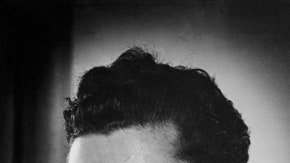The Novel that Norman Mailer Didn’t Write

This brilliant work of intellectual autobiography is a documentation of, and a substitute for, half a decade of fiction that Mailer didn’t write. His speculative varieties of self-study are also a replacement for a direct narrative exploration of the psychic loam of his youth.
Anecdotes about a poor Jewish boy in New York, and other details about literary education at Harvard, serve as a handful of pages of backstory in “The Naked and the Dead.” When turning his attention to a second novel, Mailer considered that he had already thoroughly “mined” his past:
It’s hard to know why those choices would seem any less real than the ones that Mailer actually made. He set his second novel, “Barbary Shore,” from 1951, in Brooklyn—in what he called “an imaginary future.” He then went to Hollywood expressly to research his third novel, “The Deer Park,” from 1955, which he wrote in the voice of a protagonist, Sergius O’Shaugnessy, who was Maileresque in perspective but not in background or in bearing: “I had blond hair and blue eyes and I was six-feet one. I was good-looking and I knew it; I had studied the mirror long enough.” He seemed to flee reality as much as he embraced it, and, in “Advertisements,” he explained why he did so. In creating such an idealized alter ego, he wrote,
In his biography of Mailer, Lennon writes, “Less is known of Mailer’s high school years than any other period of his life,” adding, “Mailer seldom wrote about his childhood. In 2004, he said that he had avoided writing about Long Branch and Brooklyn because ‘too many crystals are there’ and ‘you don’t want to write about the material.’ ” Yet if Mailer took those early years as material, he rendered it only in the most abstract and unrecognizable form. Paradoxically, Mailer’s formative idea of his vocation, which he claimed to have discovered at Harvard (from which he graduated in 1943), was based on the notion of personal storytelling. He claimed that his first literary models were James T. Farrell, John Dos Passos, and John Steinbeck. Lennon cites the effect that the discovery had on him: “‘Suddenly,’ he said, ‘I realized you could write about your own life.’” When Mailer wrote “The Naked and the Dead,” he wrote about his experience of battle in the Second World War (albeit not in a first-person voice). But when he came home from war, he found that, in a literary sense, he couldn’t go home again. Could a stronger dose of James Joyce, instead of Farrell and Steinbeck, have convinced Mailer that his Brooklyn was good enough for his masterwork?
In “Advertisements,” he wrote, “There was a frontier for my generation of novelists. Coming out of the orgy of the war, our sense of sex and family was torn in two.” Fitzgerald and Hemingway, coming out of the orgy of another war, had the same problem, but it didn’t prevent them from writing about sex and family, or from taking their prewar experiences as prime matter. Not so for Mailer. “The past did not exist for us,” he continued. “We had to write our way out into the unspoken territories of sex—there was so much there, it was new, and the life of our talent depended upon going into the borderland.”
The territories of sex may have been unspoken, but they weren’t unexperienced or unseen. At more or less the same time as Mailer wrote these words, Philip Roth was finding sex in the suburbs in “Goodbye Columbus” and, not long thereafter, revealed that the unspeakable thrived in the Portnoy family’s cramped Newark apartment. Yet Mailer, instead of considering Brooklyn as the center of his own life and therefore of the world, instead of defining everything he had done to date as his experience, went out in search of new experience. Having found a place in the spotlight at a remarkably young age, he wrote about the spotlight, seeking out its many reflections and ranging through politics and media, history and myth, to investigate and calibrate the connection between celebrity and power, between image and being. In the process, he seemed not to be building on his past but, rather, fleeing it; he wasn’t questioning or exploring his identity as much as he was fabricating it. Mailer built the grand edifice of his oeuvre without a foundation, and its tremulous instability is one of its most conspicuous—and poignant—traits.
Source link



